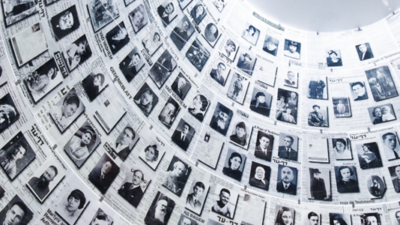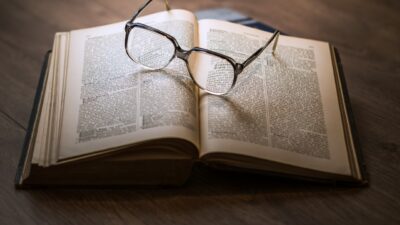Concrete measures for preventing and countering Holocaust distortion
Objectives:
- To stimulate discussion about the factors that contribute to the spread of Holocaust distortion and the factors that contribute to countering it.
- To reflect upon the potential of partnerships and collaboration for countering Holocaust distortion
Number of participants: 5–30
Duration: 90 minutes
Description of the activity:
- The participants are invited to think about aspects that contribute to young people engaging in Holocaust distortion. Each participant receives around five moderation cards or sticky notes and is asked to draw a line in the middle, separating the note into two sides. On the left side of each note they should write one element that leads to young people engaging in Holocaust distortion (like in the table below). The right side should remain blank.
One factor that contributes to young people distorting the Holocaust
|
- In order to clarify the task for the participants, the trainer can give some examples of factors such as: an interest in gaining “likes” on social media, peer pressure, ignorance, etc. The participants are instructed to think of different reasons related to social context, personal characteristics, competences, motivation, etc. that encourage young people to distort the Holocaust. They should write only one reason on each note and use as many notes as they need.
- The participants stick their notes to a wall or display them on the ground in the middle of the room. If the training is done online, applications such as Padlet or Miro can be used for this purpose or even a spreadsheet. They are asked to come together and each person must pick a few notes, other than the ones they wrote themselves. Their task is to write on the right-hand side of the note what may contribute to countering the reason mentioned on the left-hand of the note. For example, interest in collecting likes on social media could be countered by increasing one’s self-esteem, respect for human dignity, etc.; a reason such as believing conspiracy theories learned from their parents could be countered by specific educational activities, visit to archives, museums, etc.
- Each participant reads their notes – what contributes to the spread of Holocaust distortion and what contributes to countering it.
- The trainer or a volunteer participant writes down on the board or shared document a list of all the things mentioned on the right-hand of the notes, factors/competences/actions that can limit the spread of Holocaust distortion.
- The participants are engaged in a debriefing discussion based on the following questions:
- Was it challenging to come up with solutions to some of the issues identified by the other participants? Which ones?
- Were you surprised by the number of factors that contribute to Holocaust distortion identified by the group? Why?
- Were there some “solutions” proposed by colleagues that you found interesting/useful in what the colleagues proposed? Which ones?
- The trainer concludes this part by emphasizing that there are many factors that contribute to Holocaust distortion, from lack of knowledge and critical understanding to the need for belonging, peer pressure, undemocratic values, indifference, etc. For this reason, young people need a complex set of competences in order to understand what Holocaust distortion is, why they should not engage in it, how to identify when other people manifest Holocaust distortion and, eventually, how to contribute to countering it.
- The participants are invited to work in groups of 4–5 people and, starting from the list of competences/actions listed on the board (which were written on the right side of the notes), to think about the specific context in which they teach and discuss what can facilitate teaching these topics and developing these competences. For example, they can identify curriculum specifications for subjects such as history, literature, arts, civics, etc., they can discuss the extra-curricular activities they can/have to do in their school, about national holidays and other events that can facilitate addressing Holocaust education and Holocaust distortion, national or international partnerships of their school, etc.
- Each group presents the conclusions of their discussions and the trainer engages the participants in a debriefing discussion based on the following questions:
- Were there some competences/actions for which there are limited opportunities to be addressed with your students? Which ones?
- Do you think that by addressing all the factors listed here you can contribute significantly to countering Holocaust distortion? If not, what else needs to be done in the field of education to better address this?
- Which entities can you collaborate with at local, national and international level in order to better address Holocaust distortion?
- The trainer concludes by stating that the ramifications of Holocaust distortion are wide and complex, but so are the opportunities to address it and counter it if we are committed to empowering young people to become active citizens who value the truth, respect for human dignity and understand the importance of their own contribution to the development of democratic societies.
On this Topic
Lessons for
Topic
Number of participants:
Average Duration of Lesson:

